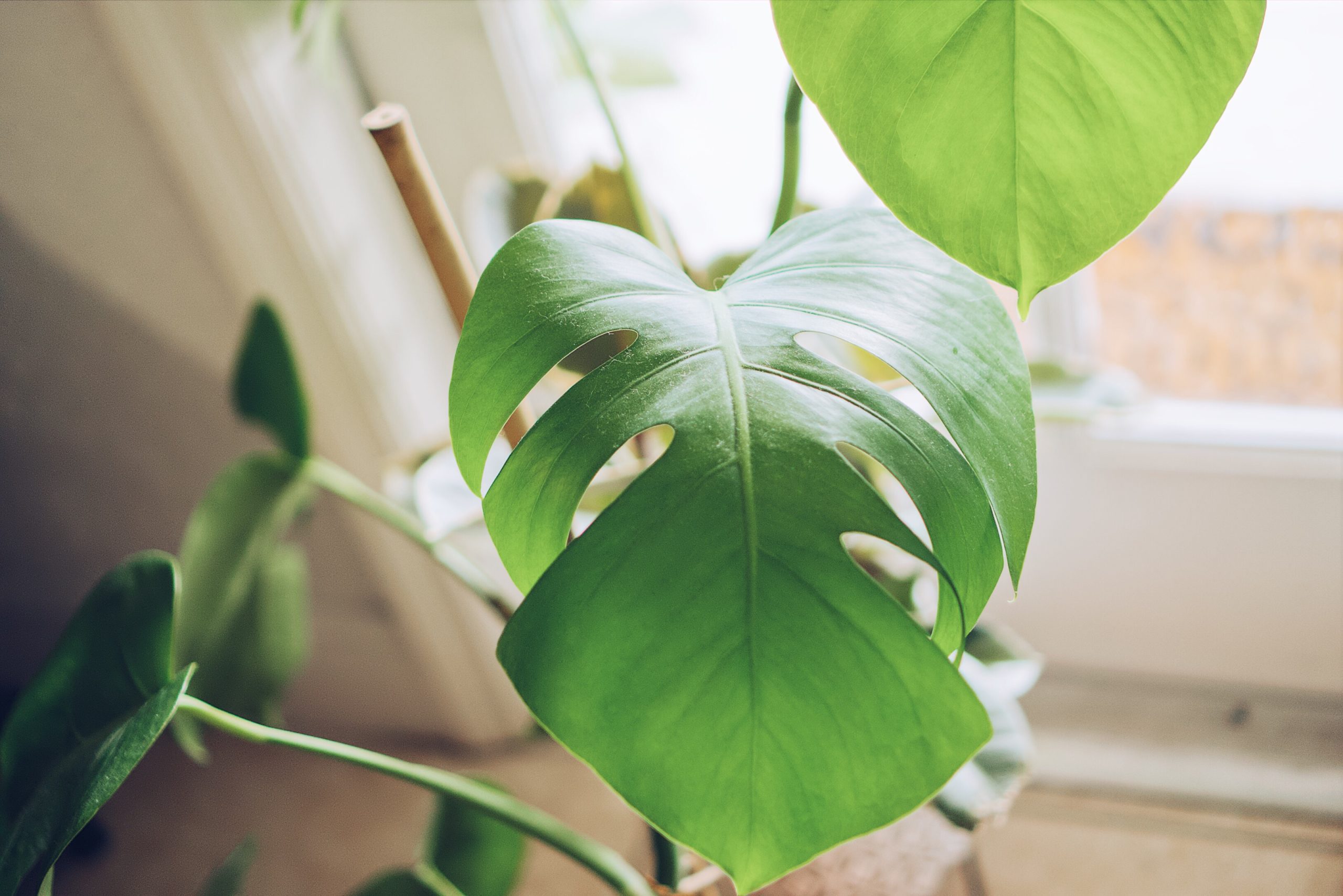The hurricane plant, or monstera deliciosa, goes by many names—the swiss cheese plant, Mexican breadfruit plant, split-leaf philodendron (though it’s actually not a philodendron at all)—but by any name, this plant is iconic and a favorite among houseplant fans. Here’s our complete hurricane plant care guide so you can add this gorgeous plant to your collection!
Table of Contents
Where do hurricane plants come from?
Hurricane plants are aroids, just philodendrons, pothos, peace lilies, and calla lilies. These plants originate from the tropics of Central America and produce the Mexican breadfruit.
The most striking feature of hurricane plants is their massive, slotted leaves. No one knows for sure why the leaves have holes, or fenestrations, but one popular theory suggests that these holes help the leaves withstand strong wind and rains while still netting lots of sunlight beneath the rainforest canopy, hence the name “hurricane plant”!
Where to Buy a Hurricane Plant
Luckily, these plants aren’t difficult to find. You may run into some of these plants at big home improvement stores like Lowe’s or Home Depot, or in your local nursery. You can also find hurricane plants online.
You may be able to find mature plants or cuttings locally on Facebook Marketplace or Craigslist, but you can also check Etsy and eBay.
Just go to one of these sites and search “hurricane plant,” “swiss cheese plant,” or “monstera deliciosa” and see what comes up!
Here are a few of our favorite Etsy shops for purchasing plants:
Your Hurricane Plant Care Guide
Potting and soil
When you get your first hurricane plant home, leave it in its grower pot for about a month so it can get used to its new home.
After a few weeks, it’s time to pot your hurricane plant into a pot with drainage that’s about 2-3 inches larger in diameter than the plant’s root ball. Use a rich, peaty soil like indoor potting mix with a few handfuls of peat moss mixed in. You could also use LECA or hydroponics!
Light
Hurricane plants need plenty of bright, indirect sunlight to stay healthy and produce those beautiful fenestrated leaves we all know and love. Place your hurricane plant near an east- or south-facing window where it will get lots of bright light but not where the sun’s rays will ever fall directly on the leaves. You don’t want scorching!
Water
Your hurricane plant will like evenly damp soil, so water when the top 2-3 inches of soil feel dry or when a moisture meter reads 3-4. Water the soil until the pot just starts to drain, or you can bottom water your plant.
If your plant has sufficient light and drainage, you should be watering every 7-10 days.
Read our full watering guide here: How to Water a Monstera: The Ultimate Guide
Temperature and Humidity
These are tropical plants, so they prefer fairly warm, humid conditions. Place your hurricane plant in a room that hovers around 70 degrees Fahrenheit, but keep it far away from drafts, AC and heating vents, space heaters, and fireplaces, which can freeze, scorch, or dry out the leaves!
While hurricane plants will be fine with most indoor humidity levels, you may want to supplement more humidity, especially in the winter or if you live in a very dry area. Set up a humidifier nearby or place your hurricane plant (pot and all) on a shallow tray filled with pebbles and water (this will create some humidity as the water evaporates). But don’t let the roots touch the water!
Fertilizer
Hurricane plants need the right balance of nutrients to grow healthy roots, strong stems, and those big, gorgeous leaves! Try mixing a little Monstera Plant Food in your watering can each time you water. I do this and my hurricane plants love it! The best part is, I don’t have to remember a fertilizing schedule because Monstera Plant Food is gentle enough to use with each watering.
Pruning and Propagation
Hurricane plants are called monsteras for a reason: they can get monstrously huge! If your hurricane plant starts to get out of control, simply remove some of the leaves with sharp, clean shears or a knife. You’ll also want to prune off any dead leaves.
Read our guide to pruning: How and Why to Prune Your Monstera
You can also propagate your cuttings! Just stick them in a container of water with a little Propagation Promoter and wait a few weeks for roots to form. Once your roots are an inch or two long, plant the cutting in soil!
Read our full guide to propagation here: The Ultimate Guide to Propagating Monstera Plants (With Step-By-Step Photos!)
Supports
Hurricane plants produce aerial roots that affix to surfaces so the plant can “climb,” so you may want to give your plant a trellis or other support. You can buy a ready-made trellis or make your own moss pole!
Troubleshooting
You may run into trouble with your hurricane plant, but we’ve got you covered. Read our troubleshooting guides here!
What to Do if Your Monstera Leaves Won’t Split
What’s Wrong With My Monstera: Monstera Leaf Troubleshooting
How to Get Insects OFF Your Monstera
4 Signs Your Monstera is Overwatered
4 Signs Your Monstera Needs More Light
How to Diagnose and Treat Root Rot in Monsteras
You’ll be a hurricane plant pro in no time!





